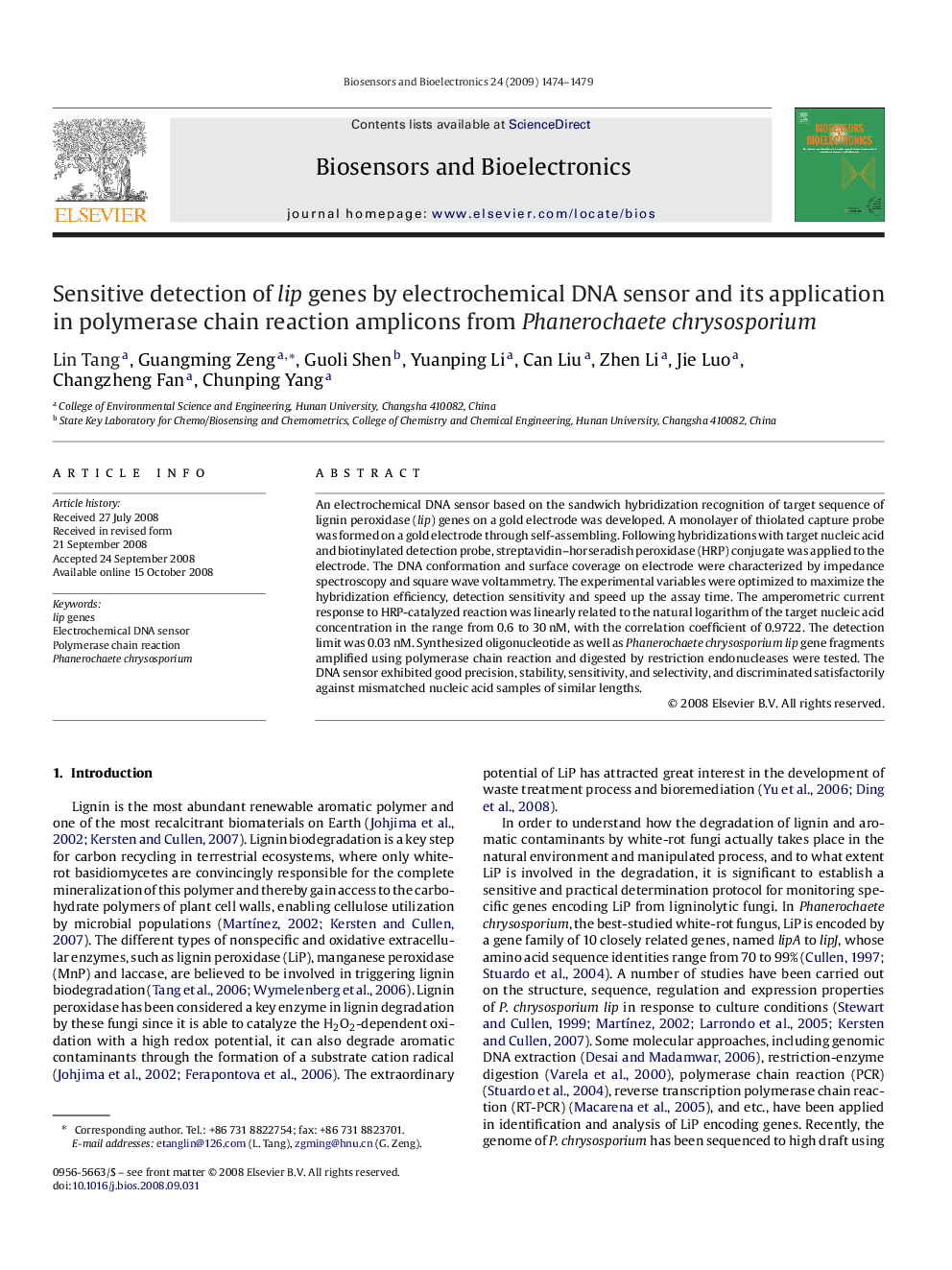| Article ID | Journal | Published Year | Pages | File Type |
|---|---|---|---|---|
| 868899 | Biosensors and Bioelectronics | 2009 | 6 Pages |
An electrochemical DNA sensor based on the sandwich hybridization recognition of target sequence of lignin peroxidase (lip) genes on a gold electrode was developed. A monolayer of thiolated capture probe was formed on a gold electrode through self-assembling. Following hybridizations with target nucleic acid and biotinylated detection probe, streptavidin–horseradish peroxidase (HRP) conjugate was applied to the electrode. The DNA conformation and surface coverage on electrode were characterized by impedance spectroscopy and square wave voltammetry. The experimental variables were optimized to maximize the hybridization efficiency, detection sensitivity and speed up the assay time. The amperometric current response to HRP-catalyzed reaction was linearly related to the natural logarithm of the target nucleic acid concentration in the range from 0.6 to 30 nM, with the correlation coefficient of 0.9722. The detection limit was 0.03 nM. Synthesized oligonucleotide as well as Phanerochaete chrysosporium lip gene fragments amplified using polymerase chain reaction and digested by restriction endonucleases were tested. The DNA sensor exhibited good precision, stability, sensitivity, and selectivity, and discriminated satisfactorily against mismatched nucleic acid samples of similar lengths.
